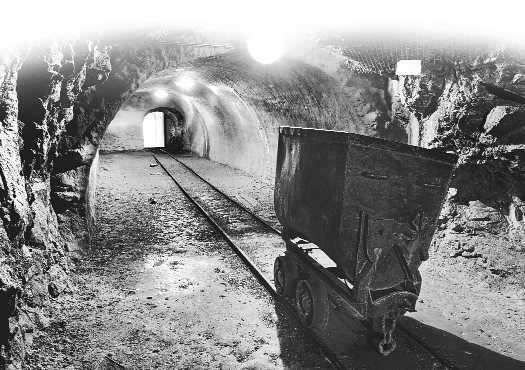Yash Goyal in Jaipur
The richness of the Thar entrails is mindboggling. Consider this: A recent Geological Survey of India (GSI) report says 114.78 million tons of ore may yield 223.69 tons of gold, 1,60,066 tons of copper, 11,146 tons of nickel and 13,739 tons of cobalt. Western Rajasthan is not only rich in crude oil and gas reserves but also has huge deposits of radioactive uranium. The Aravali ranges, spread across Alwar, Udaipur, Banswara and Dugnarpur, have shown ‘gold ore’ deposits.
Yet there is indifference: GSI officials hold routine meetings with the State Geological Board where experts from Bureau of Mines, Atomic Mineral Directorate and others submit their recommendations. And nothing tangible in terms of prospecting happens.
“A case related to gold ore mining in the 25 sq km area of Banswara has been pending in the Supreme Court since 2006. A decade back a private firm, Metal & Mining Company (MMC), with a prospecting licence was supposed to start work. The state government wants to cancel the firm’s licence and proceed with the auction route for a better deal. The MMC went to the High Court and later the SC,” says a senior officer of Udaipur-based Director of Mines and Geology.
Last year Mineral Exploration Corporation Limited (MECL) entered into a tripartite agreement with the state government and the State’s Department of Mines & Minerals for exploration of mineral blocks. The MECL will work under the National Mineral Exploration Trust — a non-profit body of the Centre — and give a 2% royalty.
There is yet another roadblock: A Supreme Court order in 2002 directs the state government not to lease out any mines near Aravali ranges. Geologists say extracting gold ore from the depths of hills is an extremely daunting task. “Even if we do dig up, there is no guarantee of the quality of the extracted metal. This can raise questions on the viability of the entire project.
And ditto holds true for uranium mining. The Rajasthan Atomic Power Station depends on imported uranium. Yet the state government has never risen above mining building materials; and mining policies made by every government dominates the mining auction politics. Thus valuable research outputs continue to lie in cold storage.
Geologist Prof KL Shrivastava at Jai Narain Vyas University, Jodhpur has claimed a new type of calcrete uranium — calcium & magnesium carbonates — in the Jodhpur division.
The Malani terrain in western Rajasthan has many favourable factors for calcrete-type uranium mineralisation, and rocks are enriched with uranium, potassium and vanadium.
Two places — Agolaee and Binavas, about 40 km from Jodhpur on Jaisalmer road — have been marked for calcrete uranium. A regional hydro-geochemical survey has enabled experts to demarcate small target areas showing unusual high concentration of uranium locally in the groundwater. Studies have shown high uranium and potash content in these rocks. High resolution ground penetrating Radar has been used at selective potential sites to detect presence and thickness of the calcrete. A few scholars of Atomic Mineral Division under Ministry of Atomic Energy have done their PhD in a follow up research based on this breakthrough. But, there has been no tangible action on the ground.










